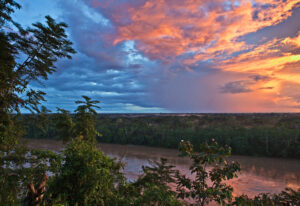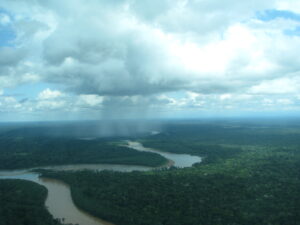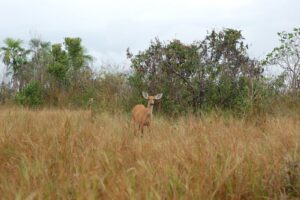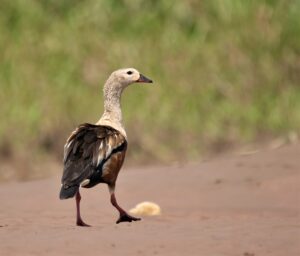Supporting local government and communities to protect 3.7 million acres of pristine forests, savannas, and wetlands.
In 2019, we helped the local government of Ixiamas, Bolivia establish the Municipal Conservation Area of Bajo Madidi, an area spanning 3.7 million acres (1.5 million hectares). Three times the size of the Grand Canyon, this conservation area is the largest in Bolivia and one of the largest in the world. It hosts a variety of ecological landscapes including wetlands, lowland rainforests, and savannas.
Throughout the long and complex creation process, we provided the technical expertise and assistance to both the government and local communities that was needed to officially declare the area. We also helped them gather and understand key environmental data on the conservation needs of this landscape to develop the plan to protect it for the long-term. This conservation plan now guides the sustainable use and management of natural resources in Bajo Madidi.
This area’s value lies in its major biological significance. While many savannas in Bolivia have been transformed by cattle ranching or road construction, the savannas within Bajo Madidi remain some of the most ecologically-intact savannas in the world. They are home to more than 20 endangered species such as the maned wolf, Orinoco goose, marsh deer, black-faced spider monkey, and the giant anteater, all categorized as “vulnerable” or “threatened” on the IUCN Red List of Threatened Species.
The protected area will also protect the six rivers that flow through Bajo Madidi, safeguarding critical watersheds and aiding migration of birds, fish, and other animals that contribute to the overall rainforest health. Additionally, it will help maintain local  communities’ sustainable harvesting of herbs, fruits, and nuts. This forest alone contains nearly 10% of the world’s Brazil nut trees under production. It also connects nearby nature reserves, creating an important biodiversity corridor of protected lands in the region.
communities’ sustainable harvesting of herbs, fruits, and nuts. This forest alone contains nearly 10% of the world’s Brazil nut trees under production. It also connects nearby nature reserves, creating an important biodiversity corridor of protected lands in the region.
The establishment of this area was a massive undertaking with contributions by local peoples and support from over 800 stakeholders. Successes like these are the foundation of our conservation efforts that have helped protect over 8.3 million acres of forests to date.
This was a story from our 2019 Impact Report. Click here to read about other conservation successes from 2019.




